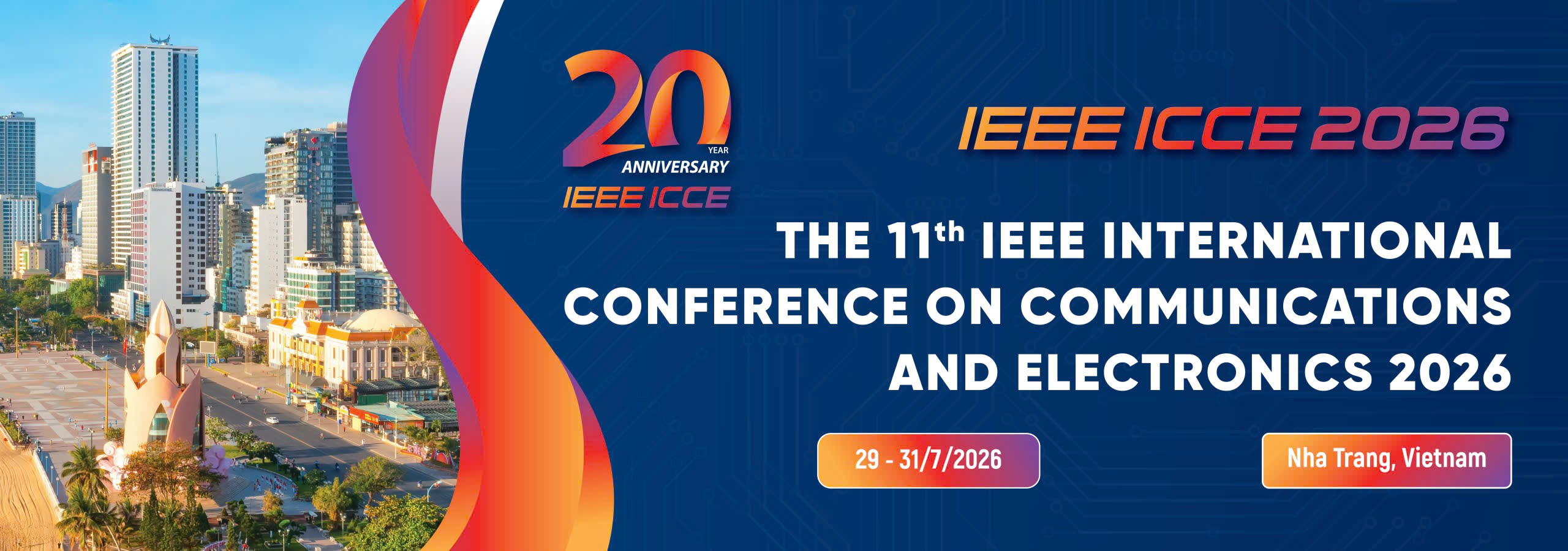|
I. COMMUNICATION NETWORKS AND SYSTEMS
Networking: Cloud/Fog/Edge Computing; Networking for Big Data; Social Networks; Network Security; IoT and Applications; AI in Networking; Network Infrastructure for AI; Mobile & Wireless Networks; Next-Generation Networking & Internet; Paradigms & Applications; Network Softwarization; Datacenter Networking; Network Optimization and Performance; Energy-Efficiency in Network and Cloud.
Communication Systems: Modulation, coding, information theory, and communication security; MIMO, massive MIMO, and cell-free MIMO systems; mmWave, THz, and ultra-reliable low-latency communications; cognitive, cooperative, and green communications; integrated sensing and communication (ISAC); Semantic and quantum communications; RIS/IRS and stacked intelligent metasurfaces (SIM); AI- and ML-driven wireless networks, SDN, and NFV; IoT, V2X, and D2D communications; Satellite, UAV, and HAP networks; Optical, VLC, and radio-over-fiber (RoF) communications.
II. SIGNAL PROCESSING AND APPLICATIONS
Signal Processing: Signal Filtering, Detection and Estimation, Statistical Signal Processing and Modeling; Signal and Image Encryption; Multimedia Privacy, Security and Forensics; Biomedical Signal Processing and Systems; Signal Processing Fundamentals & Applications; Signal Processing in Biomedical and Communications.
Multimedia Processing: Image/Video Processing, Analysis and Applications; Speech, Language, and Audio.
Deep Learning and Machine Learning for Signal Processing: Machine Learning for Signal Processing; AI for Multimedia Understanding; Multimodal AI; Generative AI and LLM for Signal Processing; AI Foundations and Big Data for Signal Processing; Edge AI and Efficient ML; Human-AI Collaboration; Learned Data Coding and Processing.
V. POWER ELECTRONICS
Power Electronics Devices and Components.
Power Converter Topologies.
Converter Modelling, Design, and Control.
Power Electronics Applications: Renewable energy, EVs, smart grids, industrial drives, Energy Storage and Power Management, wireless power transfer, biomedical power electronics, aerospace, and defense systems.
|
III. MICROWAVE ENGINEERING
Microwave and Millimeter-Wave Devices and Components Design: Passive and Active Devices/Components, Integration Techniques, Nano-Scale Devices, Mm-Wave and THz Components.
Antenna and Propagation: Compact Antennas, Reconfigurable and Smart Antennas, Beamforming, Massive MIMO Antennas, Phased Arrays, Measurements, Channel Modeling and Propagation, and Other related topics.
EM Field Theory and Simulation Techniques: EM Theory, Modelling and Computational, Imaging, Metamaterials, Metasurfaces, Transparent Surfaces, Scattering and Diffraction, and Other EM-related topics.
Microwave and Millimeter-Wave Systems and Applications: Sensing, Radar, Localization, Intelligent and Reconfigurable Surfaces, RFID, Wireless Power Transfer, Energy Harvesting, EMC/EMI, and Other related applications.
IV. ELECTRONIC SYSTEMS
Digital, mixed-signal, analog/RF/mm-wave integrated circuits and systems.
Emerging technologies, circuits and applications including IoT, autonomous vehicles, FPGA-based and embedded systems.
EDA: System Design, Synthesis and Optimization; Formal Methods and Verification
Architectures and Systems: NoC, Multi-Core, Video and Multimedia, Embedded Systems, Reconfigurable Computing, System-Level Power Management, IoT Devices, Hardware Security, High Performance/Parallel Computing Platforms for Big Data.
Application Systems: Communication, Consumer and Multimedia; Medical and Healthcare; Spacecraft Avionics, Artificial Intelligence, Deep Learning.
SPECIAL SESSIONS
Tb be announced
Please visit https://ieee-icce.org/category/special-sessions for more details.
|





